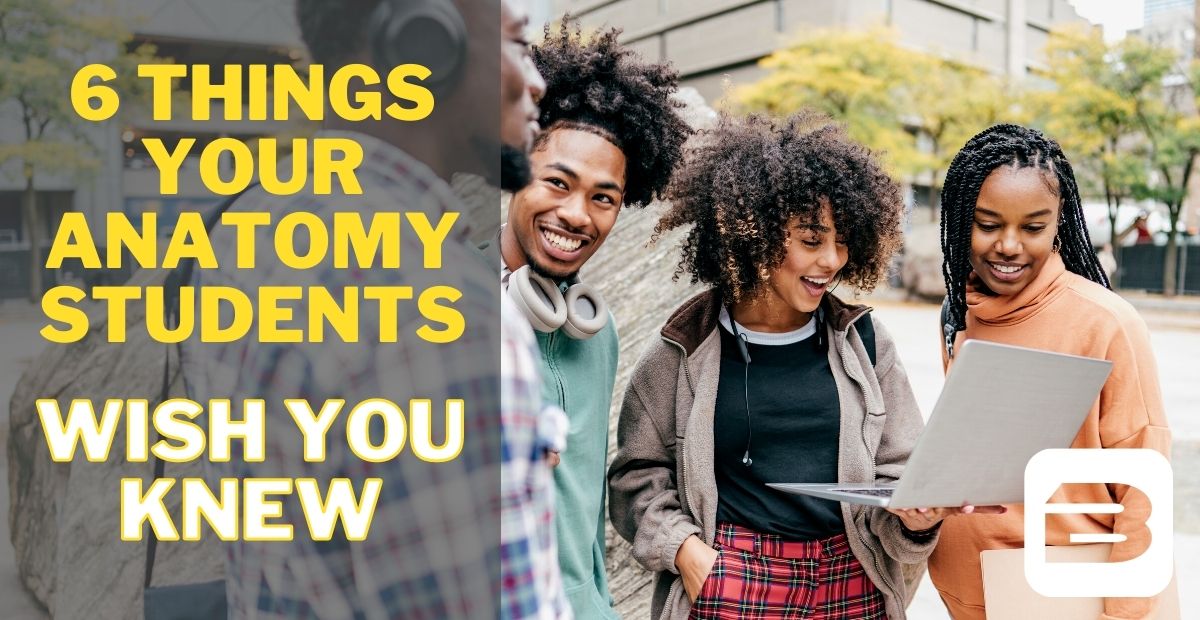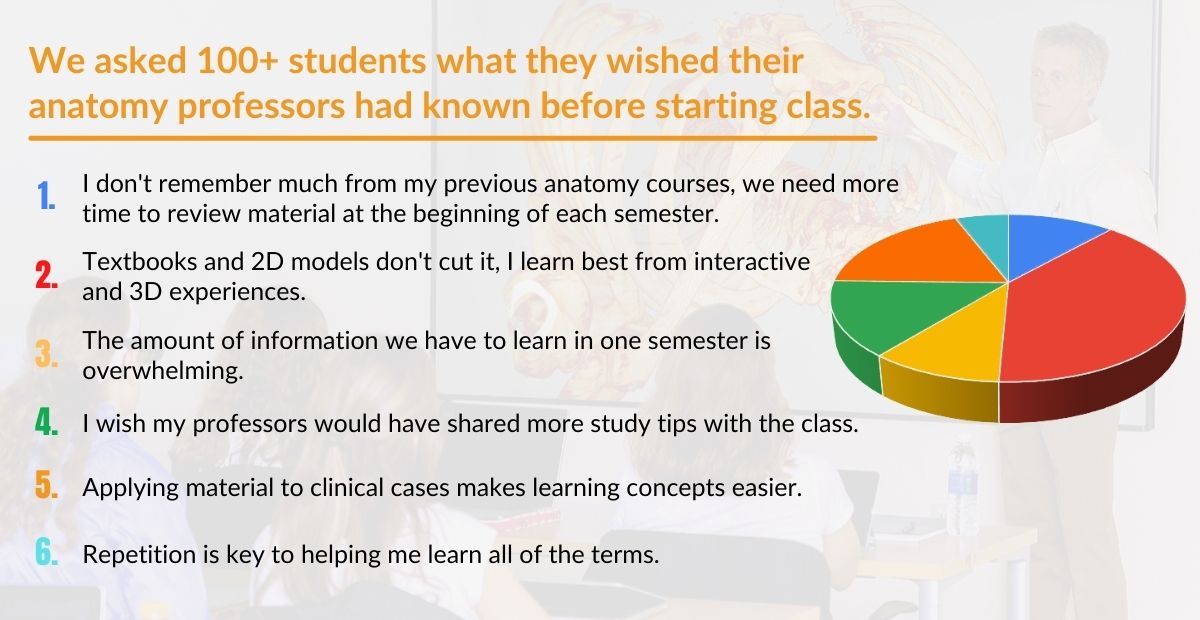6 Things Your Anatomy Students Wish You Knew
September 21, 2021

Ever wonder what your anatomy students are really thinking? Do you hate waiting until the end of the semester to receive feedback from surveys with information you would have loved to have know at the begging or perhaps before the semester even started? We created a short anonymous survey and reached out to previous anatomy students on feedback. We were amazed at the feedback students responded with and believe this information is valuable and important for all anatomy and biology instructors!

1. Your students remember less than 50% of the material from their previous anatomy courses.
Do you truly understand the amount of information that is lost or forgotten by students from their previous courses? In a recent study examining first year medical student retention of material, researchers concluded that more than 50% of first year medical school knowledge is forgotten, or cannot be reproduced on an exam after an interval of only 8-10 months. Take the time to review past material with your students at the beginning of each semester and get those gears spinning again!
2. Textbooks and 2D images don't cut it, students learn best from hands-on experiences.
Our most popular response, and rightly so! In today's classroom, 3D technology makes it easy to provide hands-on learning experiences regardless of where students are studying from. Interacting with anatomy in 3D helps students visualize where structures lie and how they sit in relation to other body parts.
"Most anatomy words are new for the first time student. Anatomy felt like a memorization course than learning where structures were located. I'm a 3-D, tactile learner so looking at pictures/diagrams to learn is harder to visualize. Getting into the real world and touching bodies while working has been helpful and I feel my anatomy is better." - anonymous student
See 3D anatomy technology in action!
3. The amount of new information students have to learn each year is overwhelming.
Empathize with your students. Even though you've been in their shoes and know from experience how overwhelming anatomy can be, make it clear to your students that you know what they're going through and be conscious of this while presenting new information. Students like to hear personal stories of your past experiences from when you first stepped into the anatomy lab. Let them know that you understand what they're going through and are here to help them succeed.
"Anatomy can feel very overwhelming the first time you see it - I think profs can forget that because when you teach something for a long time, it’s hard to remember what it’s like learning it the first time." - anonymous student
4. Each of your students learn differently, share study tips for various types of learners.
At first glance, rote memorization feels like the only option for many anatomy students. Providing your students study tips outside of your traditional pedagogy helps different types of learners find a technique that works for them.
Learn more about the various learning opportunities included with 3D anatomy resources.
5. Understanding anatomy is easier when it's applied to clinical studies.
It's easy for students to get lost in the sea of details within anatomy. Applying your course material to clinical studies and real-world scenarios helps students tie the information to a complete thought, as opposed to strictly memorizing the material.
"With my experience in undergrad and now in medical school, I wish anatomy teachers would spend more time on clinical correlates or active learning styles that allowed the information to be tied to a thought besides memorization alone. Outside of that, I felt anatomy was simply memorizing information so any types of active learning that can be incorporated enhances student participation and engagement." - anonymous student
Learn how to virtually reconstruct real clinical cases to use in your courses.
6. Repetition. Repetition. Repetition.
We know your curriculum is already dense, however, one of the most common responses we received was that students wished their instructor(s) had reviewed material more often. Review activities at the beginning of class, individual/group competitions, and even games like Jeopardy can be a fun and successful way to get information in-front of your students more frequently.
Check out our ready-to-use review modules included with the BodyViz 3D Anatomy Learning Platform.
Helpful Links: